Blog
Are Social Media Feuds the Future of Professional Golf?
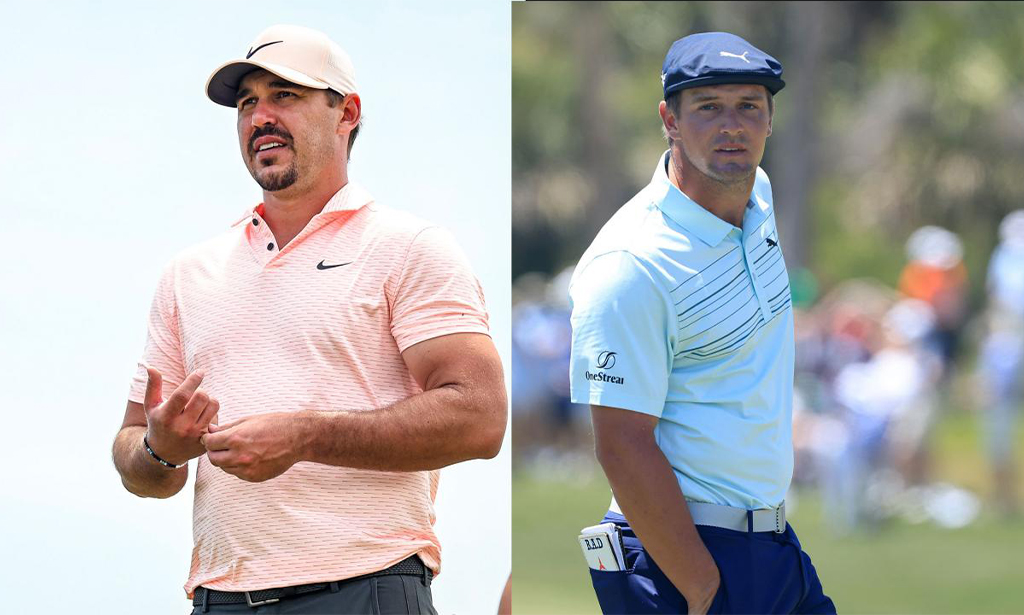
The phrase “all publicity is good publicity” is not universally true. Let’s say we learned tomorrow that a professional golfer was caught on camera stealing food from an orphanage. There’s no silver lining there, no material benefit to the fact that this player’s name was being mentioned often on digital platforms. It would be comprehensively b-a-d bad. To give a real-world example, if you’re Scott Piercy and you post an offensive meme on Instagram, you lose your sponsors and 14 months later you’re snapping a putter over your knee. Some publicity is bad publicity.
That said, a statement doesn’t have to be true 100 percent of the time in order to be mostly right. Which brings us to Brooks Koepka and Bryson DeChambeau. Humor me while I tell you something you almost certainly already know: Leaked footage from an aborted Golf Channel video showed Koepka expressing clear annoyance at DeChambeau, which quickly spiraled into a Twitter feud that involved Phil Mickelson, Tom Brady and Aaron Rodgers. In a sport where bad relationships and negative storylines are routinely squelched, and where even players who don’t like each other tend to circle the wagons publicly, this was a remarkably overt display of hostility. Clearly, Koepka’s disdain for DeChambeau had reached such a degree that he no longer cares about decorum.
Who fared worst? Opinions run the gamut, but what’s clear is that this generated a whole heap of attention. Koepka’s video had 10 million views on Twitter in a little more than a day before it was taken down. The subsequent drama has lit up social media and driven heaps of content across the golf web, including this piece. It made the home page of ESPN.com, no small feat for a golf story that doesn’t involve a major championship or Tiger Woods. Mickelson’s PGA Championship win at Kiawah is still the biggest story of the week … right? But even though I originally thought this would be one of those Twitter echo chamber stories, the Koepka-DeChambeau feud has obviously broken through to the mainstream and challenged one of the most historic victories in 150 years of major championship golf for media supremacy.
At the risk of sounding ancient, this is very much a sign of the times. And I fully admit to being as fascinated as everyone else, which makes me complicit in whatever is happening here. And it makes me wonder: Are we in for a lot more of this, in golf and beyond?
The mind begins to reel, because while this kind of attention would be classified as “negative”—it stems from antipathy and continues to be fueled after the initial act by digital insults—we also have to reckon with the idea that in terms of exposure and name recognition and the dreaded #brand, this has been an emphatic net positive for both players. You may personally think less of one or both of them, but I can guarantee you their agents are happy. These were already two of the most famous golfers in the world, but today, more people know their names than ever before. And even if you already knew them, you likely care more—your opinions are stronger, your sense of their personalities is more acute and your desire to see them face off in a tournament, against each other or anyone else, is heightened.
In the broadest, crassest sense, this means they can make more money.
Seriously, it’s that simple. It doesn’t take a genius to imagine all the ways this feud can be parlayed into additional opportunities, from commercials to exhibitions to media appearances, and you can bet their respective PR teams—who are geniuses, at least in a limited way—are just waiting to get to work. Drama and hullabaloo like this is also good for the sport, in that it creates interest. And that interest it generates trickles down to other entities, including other players. The PGA Tour usually doesn’t lean into controversy, so it will be interesting to see if there’s any kind of institutional pushback here. It might be wise, however, not to do anything.
I’m not a conspiracy-minded person, and believe me when I tell you I’m not endorsing what I say next, but indulge me in a hypothetical: Imagine these two players wanted to increase their already high profiles by crafting a storyline. If this whole feud had been planned all along, could they have executed it any better? Could they have more thoroughly seized the news cycle, or fed more brilliantly into the churning content machines of media and social media? Professional wrestling learned this lesson decades ago: If you want attention, drum up conflict.
By Shane Ryan on GolfDigest.com
Blog
The Art of the Unsolicited Golf Tip: How to Annoy Your Playing Partners with Wisdom
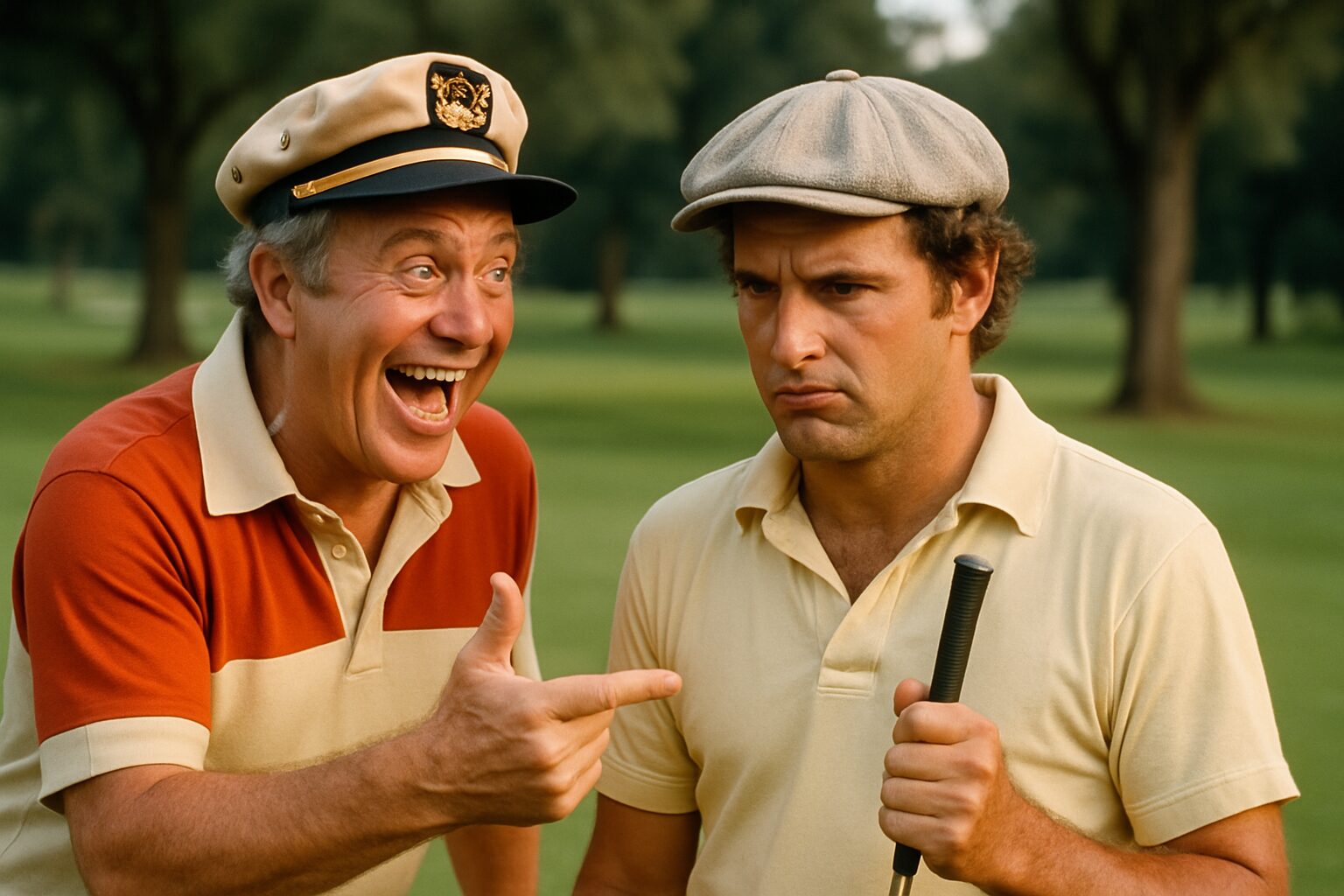
There’s a certain breed of golfer, a truly special individual, who believes that every swing, every putt, every moment on the course is an opportunity for unsolicited advice. They are the self-appointed gurus of the green, the unsolicited senseis of the sand trap. And while most people recoil from such an individual, I, Ty Webb, find a certain perverse charm in their relentless, often misguided, generosity. After all, what is golf if not a canvas for human folly, painted with strokes of well-intentioned, yet utterly useless, wisdom?
Consider the scenario: your playing partner, a man (or woman) of quiet desperation, is about to address the ball. Their brow is furrowed, their stance is tentative, their very soul is screaming for a moment of peace. And then, from the depths of your profound, albeit unrequested, knowledge, you unleash it: “Keep your head down!” Or, “Slow backswing!” Or, my personal favorite, delivered with a knowing wink, “Be the ball.” The effect is instantaneous. A subtle flinch. A barely perceptible sigh. The swing, already fraught with anxiety, becomes a tortured ballet of self-doubt. The ball, inevitably, finds its way into the deepest, darkest rough.
And that, my friends, is the art. The beauty of the unsolicited golf tip lies not in its efficacy, but in its disruption. It’s a gentle reminder that even in the serene confines of the golf course, chaos lurks. It’s a subtle assertion of dominance, a playful jab at the fragile ego of your fellow golfer. It’s a way of saying, without actually saying it, “I know more than you, even if I don’t.”
Of course, there are rules to this art. Never offer a tip when someone is actually asking for one; that would be far too helpful, and thus, entirely counterproductive. Always deliver your wisdom with an air of profound nonchalance, as if the secret to a perfect swing has just casually occurred to you while contemplating the existential dread of a missed putt. And most importantly, never, ever, acknowledge the catastrophic results of your advice. A shrug, a thoughtful nod, perhaps a mumbled, “Well, that’s golf,” is all that’s required.
So, the next time you’re on the course, and you see a fellow golfer struggling, resist the urge to be genuinely helpful. Instead, embrace the art of the unsolicited golf tip. For in the gentle torment of your playing partners, you will find a profound, if slightly mischievous, joy. And who knows, perhaps in their frustration, they will, inadvertently, discover their own path to enlightenment. Or at least, a new appreciation for silence.
Blog
Why Your Golf Balls Disappear (and It’s Not the Gophers)
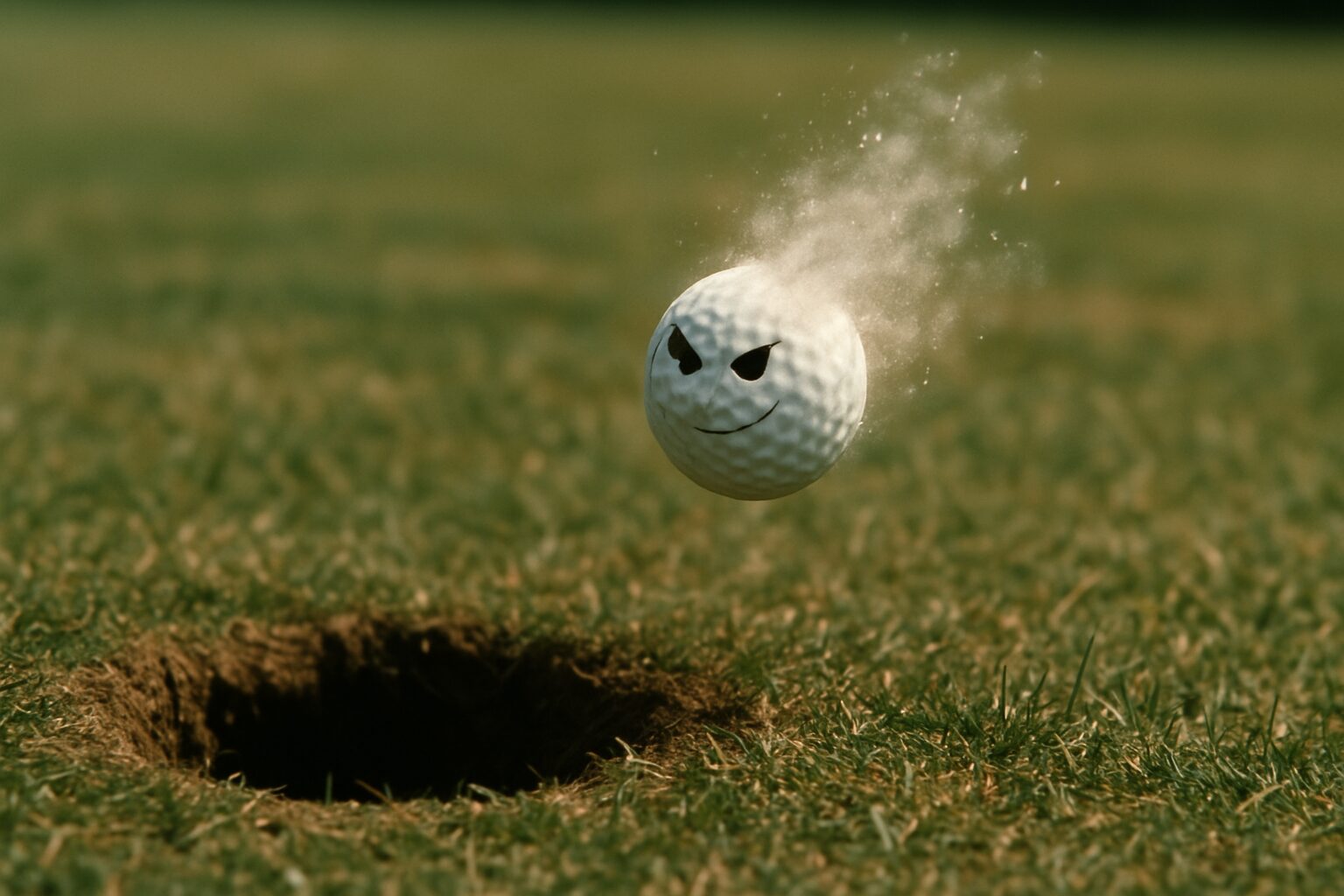
Ah, the vanishing golf ball. A phenomenon as old as the game itself, and one that has baffled, frustrated, and occasionally driven golfers to the brink of madness for centuries. Most theories involve gophers, those furry, subterranean saboteurs with an insatiable appetite for Titleists. Or perhaps a particularly aggressive squirrel, or a flock of unusually organized crows. But I, Ty Webb, have delved deeper into this mystery, and I can assure you, the truth is far more profound, and far more amusing.
Consider, if you will, the golf ball itself. A small, dimpled sphere, designed for one purpose: to be struck with great force and sent hurtling through the air. A life of constant abuse, of being smacked, sliced, and occasionally submerged in murky ponds. Is it any wonder, then, that some of these brave little spheres simply decide they’ve had enough? They yearn for freedom, for a life beyond the confines of the fairway. They dream of rolling unencumbered through fields of wildflowers, or perhaps, for the more adventurous among them, a quiet retirement in the depths of a particularly challenging water hazard.
I’ve seen it happen, you know. A perfectly struck shot, soaring through the air, destined for glory. And then, poof. Gone. Not a trace. No splash, no rustle in the bushes, just an empty space where a golf ball once was. It’s not a gopher, my friends. It’s an escape. A liberation. That golf ball, in its infinite wisdom, has chosen a different path. It has decided that its destiny lies not in the bottom of a cup, but in the boundless expanse of the unknown.
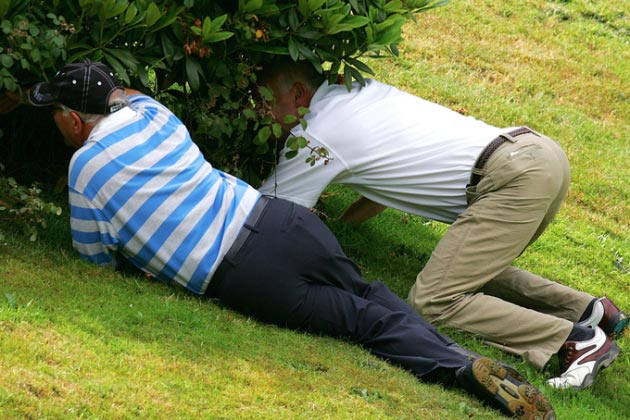
And who are we to judge? We, who are so obsessed with control, with precision, with the rigid rules of the game. Perhaps the golf ball, in its spontaneous disappearance, is teaching us a valuable lesson about letting go. About embracing the unexpected. About the inherent futility of trying to dictate the trajectory of a small, white sphere that clearly has a mind of its own.
So, the next time your golf ball vanishes into thin air, don’t curse the gophers. Don’t blame your swing. Instead, offer a silent salute to that brave little sphere, wherever it may be. For it has achieved what many of us can only dream of: true freedom. And who knows, perhaps one day, it will return, laden with tales of its adventures, ready to impart some profound, dimpled wisdom upon us all.
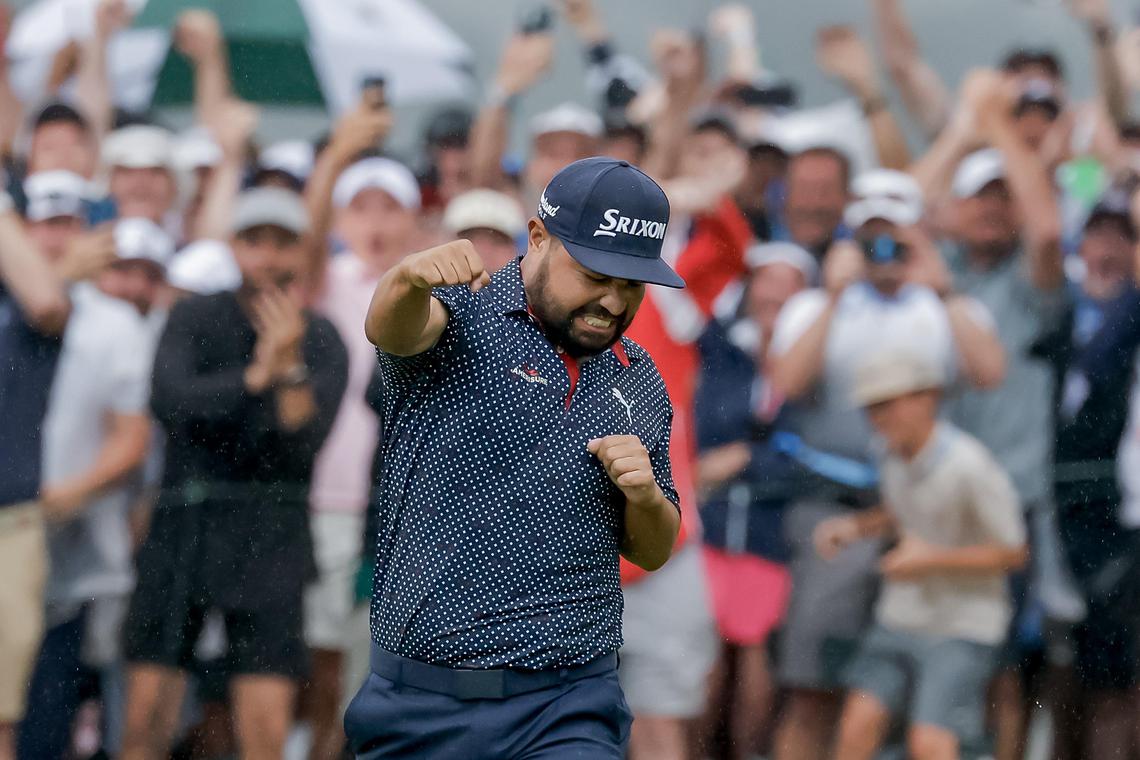
When JJ Spaun stood over a 64-foot birdie putt on the 72nd hole of the 2025 U.S. Open at Oakmont, few could have predicted what would come next. The ball meandered across the slick green, trickling over every contour, picking up speed at the crest, and then—like it had GPS—dropped center cup. Spaun dropped his putter, raised his arms, and the crowd erupted. With that single stroke, he claimed his first major title in one of the most dramatic finishes in U.S. Open history.
But how does Spaun’s putt stack up against other legendary finishes in the tournament’s storied past? Let’s break down some of the most iconic moments and see where this one lands.
1. Payne Stewart – 1999 U.S. Open at Pinehurst
Perhaps the most iconic putt in U.S. Open history came from Payne Stewart, who nailed a 15-footer for par on the 18th to win by one over Phil Mickelson. The pose—fist pump and outstretched leg—has since been immortalized in a statue at Pinehurst. What made it legendary wasn’t just the putt—it was the context: Stewart’s final major before his tragic death just months later.
Verdict: Iconic and emotional. Spaun’s putt was longer, but Stewart’s was more poetic.
2. Tiger Woods – 2008 U.S. Open at Torrey Pines
Woods drained a 12-foot birdie on the 72nd hole to force a playoff with Rocco Mediate—while basically playing on one leg. That tournament went to sudden death after an 18-hole playoff, and Tiger prevailed. This was peak Tiger drama, pain and all.
Verdict: Spaun’s putt was longer, but Tiger’s win was sheer willpower and mystique.
3. Jack Nicklaus – 1972 U.S. Open at Pebble Beach
With a 1-iron shot that hit the flagstick on 17 and a crucial birdie putt on 18, Jack sealed a dominant win. His precision and timing under pressure showed why he’s the GOAT.
Verdict: Not a putt for the win, but a signature finishing statement from Jack. Spaun’s was more electric in terms of pure putter drama.
4. Ben Hogan – 1950 U.S. Open at Merion
Hogan’s 1-iron into the 18th fairway and the par to force a playoff—just 16 months after a near-fatal car crash—remain legendary. He won the playoff and completed one of golf’s great comeback stories.
Verdict: Larger-than-life comeback. Spaun’s putt had more flair, but Hogan’s win was heroic.
5. JJ Spaun – 2025 U.S. Open at Oakmont
Let’s not underestimate what Spaun accomplished. The pressure was immense. He wasn’t the favorite. And on the most treacherous greens in golf, he buried a 64-foot bomb—a putt most players would be happy to lag to within 5 feet—to win the U.S. Open outright.
Verdict: For distance, surprise, and drama, Spaun’s putt may be the most shocking winning stroke in U.S. Open history.
Final Thoughts
JJ Spaun may not have the résumé of a Nicklaus or Woods, but for one Sunday afternoon in June 2025, he created a moment that will live in golf lore forever. Spaun’s putt was longer than Stewart’s, more unexpected than Tiger’s, and more dramatic than any final-hole finish in recent memory.
In terms of pure clutch putting? It might just be the greatest walk-off in U.S. Open history.
-

 Product Review6 years ago
Product Review6 years agoThe Perfect Practice Putting Mat Review by Jason Tenzer
-

 Blog4 years ago
Blog4 years agoLoophole Rule Offers PGA Tour Pros a Mulligan
-

 Blog4 years ago
Blog4 years ago2021 Buyer’s Guide: The Top 10 Value Golf Balls For Distance & Feel
-

 Blog4 years ago
Blog4 years agoGolf Marriage Counselor
-

 Blog6 years ago
Blog6 years ago9 Biggest Chokes Of The Past Decade
-

 Product Review6 years ago
Product Review6 years agoTHE ADJUSTABLE IRONS: WALKING STICKS GOLF CLUBS
-

 Blog4 years ago
Blog4 years agoWhat Your Golf Clubs Say About You
-

 Equipment6 years ago
Equipment6 years agoOHK Sports Interview by Jason Tenzer


















